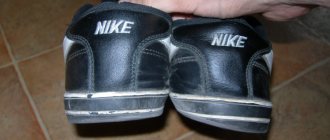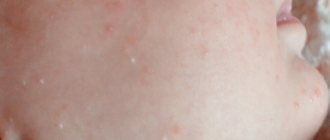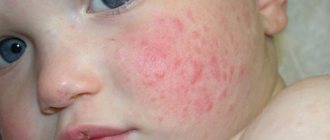General information about the disease
Pyelonephritis is an inflammation of the kidneys of a bacterial nature. Almost every second newborn is susceptible to this disease, because the kidneys are not yet properly formed at the time of birth. Children who underwent intensive care immediately after birth are also at risk.
This disease affects the pyelocaliceal system and the renal parenchyma (internal tissues). It is detected mainly in children under seven years of age.
The main causative agent of pyelonephritis in a child is Escherichia coli , which settles in the urinary system. Also, the disease is often provoked by coccal infection. Source: A.A. Kozlovsky Pyelonephritis in children (literature review) // Problems of health and ecology, 2009, pp. 60-66
Important ! Parents should know and promptly identify signs of pyelonephritis in their child. The disease is dangerous in its chronic form and even fatal.
Causes of the disease
Pyelonephritis is caused by E. coli in more than 90% of cases.
The causative agent of pyelonephritis in children
Pyelonephritis in a child is usually caused by one type of pathogen. Up to 90% of cases of the disease are caused by E. coli infection. Of lesser importance are: Klebsiella, Proteus, enterococci, enterobacteria and staphylococci. In premature infants and children with immunodeficiency, an association of pathogens - bacteria and fungi - is more often detected. Of course, one pathogen is not enough in the development of the disease.
Predisposing factors
There are a number of predisposing factors to the appearance of pyelonephritis:
- hereditary burden;
- immaturity of the organ and metabolic disorders in the renal tissue;
- congenital malformations of the urinary system;
- birth injuries, hypoxia and asphyxia during childbirth;
- neurogenic bladder dysfunction, which is characterized by normal, regular emptying of the organ;
- children's age (up to 2 years);
- constipation;
- infectious and inflammatory diseases of the external genitalia;
- bladder catheterization;
- hypothermia, which results in muscle spasms and hemodynamic disturbances.
Causes of the disease
Protozoa microorganisms, viruses, fungi, bacteria are the causative agents of inflammatory kidney diseases. In chronic forms, in some cases, a simultaneous combination of different pathogens is diagnosed.
Microorganisms can enter the kidneys:
- by blood (when an infection from another organ “spreads” throughout the body);
- through the lymph (with lymph flow, especially during stagnation in the lymphatic system);
- from the reproductive and/or urinary system (this infection occurs more often after one year and in girls).
Mechanism of development of pyelonephritis
After the child’s body is infected with pathogenic microorganisms, bacteria penetrate into the organs of the urinary system. This can occur in 3 ways: ascending, hematogenous, lymphogenous. Ascending is the most common path of disease development. Most common in children. The source of infection is most often the rectum. After overcoming the vesicoureteral barrier, the bacteria quickly multiply and release toxins that act on the kidney tissue. The hematogenous route is observed in children with immunodeficiency with the development of sepsis. Bacteria are carried through the bloodstream throughout the body, also reaching the kidneys. The lymphogenic pathway has not been studied enough. With this type of infection, migration of bacteria from the intestine is possible.
Predisposing factors:
- high aggressiveness of the microorganism, its resistance to the body’s defense mechanisms;
- abnormalities in the structure of the kidneys, causing improper outflow of urine;
- vesicoureteral reflux (when urine from the bladder flows back into the kidneys);
- stagnation of urine;
- violation of personal hygiene;
- inflammation of the genital organs;
- cystitis;
- diabetes;
- ailments that reduce immunity;
- worms;
- chronic infections;
- hypothermia;
- transfer of a child under one year to artificial feeding;
- teething.
Causes
The pathogenesis of pyelonephritis in infants is based on exposure to bacterial infection. It can enter the kidneys through the bloodstream. Infection mainly occurs during passage through the birth canal. The ascending route of infection is also quite common, when the causative agent of the inflammatory process enters the kidneys from the bladder.
Girls are more susceptible to kidney inflammation. From birth to six months, they get sick 1.5 times more often than boys, and in the period from 6 to 12 months – 4 times.
In most cases, the cause of pyelonephritis in infants is E. coli, enterococci, Klebsiella, streptococci and staphylococci. Very rarely, viruses and fungi act as provocateurs.
Often pyelitis in infants occurs at the age of 5-6 months, when complementary foods are introduced or artificial formulas are used to supplement the baby's feeding. An incorrectly selected diet or its inappropriateness for the child’s age leads to digestive problems, intestinal dysbiosis, decreased immune defense and an increased likelihood of developing intestinal infections. In this regard, the risk of pyelonephritis increases.
Other predisposing factors:
- purulent lesions of the skin - ulcers, abscesses;
- infectious diseases - ARVI, sore throat, pneumonia, otitis media;
- omphalitis (inflammation of the umbilical wound);
- congenital anomalies of the urinary system, which lead to difficulty in the outflow of urine;
- inflammatory diseases of the genitourinary system - cystitis, vulvitis, vulvovaginitis;
- improper hygiene;
- kidney malformations;
- vitamin D deficiency or excess;
- hypothermia;
- helminthic infestations.
Pyelonephritis in a newborn boy often occurs against the background of congenital malformations of the urinary system. In this case, symptoms appear already in the first month of life.
Symptoms of the disease
Symptoms and features of acute pyelonephritis in children
Signs of the disease may vary and depend on the severity of the process, existing diseases, age and other factors. The general symptoms are:
- rise in body temperature for no apparent reason;
- drowsiness;
- weakness;
- vomit;
- decreased appetite;
- pale or gray skin;
- “bruises” under the eyes;
- pain (aching, pulling) in the lower back and/or abdomen, around the navel, which may decrease with heating;
- urinary incontinence;
- painful, frequent or, conversely, very rare urination;
- swelling on the face in the morning;
- cloudy urine that may have an unpleasant odor. Source: https://www.ncbi.nlm.nih.gov/pubmed/30592257 Leung AKC, Wong AHC, Leung AAM, Hon KL. Urinary Tract Infection in Children // Recent Pat Inflamm Allergy Drug Discov. 2019;13(1):2-18. doi: 10.2174/1872213X13666181228154940.
Signs of chronic inflammatory process in the kidneys
The chronic form of the disease is characterized by alternating remissions and exacerbations. During an exacerbation, the symptoms repeat the acute type of pyelonephritis. If a child is exposed to this chronic illness for a long time, he becomes irritable, inattentive, and gets tired quickly. Developmental delays are sometimes observed.
Symptoms of pyelonephritis
There are two forms of pyelonephritis with their inherent manifestations - acute and chronic. The acute form always occurs suddenly. The child has the following symptoms:
- a sharp increase in body temperature (up to 39-40°C);
- general weakness;
- chills;
- decreased appetite;
- nausea, vomiting;
- cloudiness and change in urine color;
- headache;
- severe pain in the lumbar back.
In some cases, the pain becomes so severe that it becomes difficult for the child to lead a normal lifestyle and even move.
The pain can be unilateral or, less commonly, bilateral. The clinic of chronic pyelonephritis manifests itself to a much lesser extent. Parents often find out that their child has an inflammatory disease during a routine urine test. The chronic course of the disease is characterized by:
- weakness and increased fatigue;
- frequent urination;
- headache;
- periodic nagging pain in the lower back, worse in the cold;
- anemia (pallor of the skin and mucous membranes, increased hair loss, brittle nail plate).
As a rule, chronic pyelonephritis is a consequence of an incompletely cured form of the disease.
Why is it difficult to diagnose pyelonephritis in infants?
The baby cannot tell the parents and the doctor about the unpleasant sensations. Therefore, parents must be very attentive. Symptoms typical for newborns include:
- frequent vomiting and regurgitation;
- sluggish sucking or complete refusal of the breast (bottle);
- cyanosis of the skin above the upper lip;
- lack of weight gain or decrease;
- dry skin;
- causeless crying and anxiety (signal pain);
- difficulty urinating (the child is worried, cries, blushes before this process);
- diarrhea;
- increased body temperature;
- sleep disturbance. Source: E.M. Pleshkova Features of pyelonephritis in infants // Bulletin of the Smolensk State Medical Academy, 2006, pp. 51-53
Classification of the disease
| View | Peculiarities |
| Primary | In the absence of predisposing external factors. |
| Secondary | Occurs with various disorders and anomalies in the structure of the urinary system. |
| Spicy | Such pyelonephritis occurs under the influence of predisposing factors and pathogens (after a cold, hypothermia, etc.), remission in the child occurs after 1-2 months of therapy. |
| Chronic | It can be latent (without obvious signs) and recurrent (with exacerbations at least 4 times a year). |
Classification of pyelonephritis in children
Experts divide pyelonephritis into acute and chronic, as well as primary and secondary. In the case of primary pyelonephritis (it is quite rare in children), inflammation initially begins to develop in the kidneys; in secondary pyelonephritis, the inflammatory process has a different source. Pyelonephritis caused by other factors is divided into obstructive and non-obstructive depending on the background of the disease - functional disorders of urodynamics or various immune or endocrine changes in the body.
Acute or chronic pyelonephritis is determined depending on the duration of the process and the characteristics of its manifestation. The first is marked by the patient’s complete recovery and remission for at least six months, and the second by the persistence of symptoms for six months or repeated relapses during this period of time. Chronic is also divided into latent (urinary syndrome only) or recurrent, which occurs in “outbreaks” of an acute disease with all its characteristic symptoms.
Diagnosis of pilonephritis
The disease is diagnosed by laboratory and instrumental methods:
- cumulative samples;
- general urine analysis;
- urine culture;
- biochemical and clinical blood tests;
- biochemistry of urine;
- blood pressure control;
- Ultrasound;
- radiography;
- MRI;
- ;
- and others as prescribed by a doctor. Source: A.I. Safina Pyelonephritis of young children: modern approaches to diagnosis and treatment // Practical Medicine, 2012, No. 7(62), pp. 50-56
Lower urinary tract infections in children: options and clinical recommendations
31.07.2020
5506
1
K.I. Kramareva
Pediatric urologist-andrologist of the State Budgetary Healthcare Institution of the Children's Hospital 133 of the Department of Health, chief freelance specialist in pediatric urology-andrology of the Northern Administrative Okrug, Moscow
In the program “An Hour with a Leading Urologist,” Victoria Anatolyevna Shaderkina’s guest was Ksenia Ilyinichna Kramareva, a pediatric urologist-andrologist at the State Budgetary Healthcare Institution of the Children’s City Hospital 133 DZM, the chief freelance specialist in pediatric urology-andrology of the Northern Administrative District of Moscow. She spoke about the features of treating urinary tract infections (UTIs) and, in particular, cystitis in children.
Urinary infections occur in children of both sexes and are a common reason for visiting a pediatric urologist or pediatrician. Bacteriuria is an increase in the number of bacteria in the urinary tract (more than 105 CFU/ml), which can lead to the development of an inflammatory process.
Its main pathogens are Escherichia coli, Klebsiella pneumoniae, Proteus mirabilis, Staphylococcus epidermidis and Enterococcus faecalis. At the same time, the etiological spectrum of pathogens of acute uncomplicated infections of the upper and lower urinary tracts (pyelonephritis and cystitis) is similar. The dominant pathogen is E. coli, which accounts for 70–95% of disease cases. In 5–19%, coagulase-negative staphylococci are isolated, the main sample being Staphylococcus saprophyticus. In other cases, the pathogens may be other enterobacteria (Proteus mirabilis, Klebsiella spp.) and enterococci (Enterococcus faecalis).
Urinary tract infections in children, as well as in adults, include cystitis, urethritis, acute and chronic pyelonephritis, as well as urosepsis.
Cystitis is an infectious and inflammatory disease of the bladder wall of bacterial origin. Girls get it three times more often than boys, and the relative risk of relapse increases with age.
On average, relapses occur in 30% of girls within one year of the first episode and in 50% within five years of the first episode. In boys, relapses occur in 15–20% within one year of the first episode.
There are a number of risk factors for the development of cystitis:
- a decrease in the body’s overall resistance due to hypovitaminosis, stress, hypothermia or changes in hormonal levels during puberty;
- obstruction of urine flow from the bladder (for example, posterior urethral valve);
- circulatory disorders of the pelvic organs;
- traumatic injuries to the bladder mucosa during endoscopic examinations and operations;
- endocrine diseases (diabetes mellitus), metabolic disorders;
- sexual activity, especially early, and in the presence of hypermobility or ectopic urethra in females;
- the presence of allergic reactions (including to personal hygiene products - shower gels, soap, etc.);
- congenital anatomical and structural changes.
Cystitis in children can be classified according to the ways the infection enters the bladder:
- ascending - the most common variant of infection from the external environment through the urethra. A variant of this path is the contact path - in the presence of inflammatory diseases of the organs surrounding the bladder. Direct infection of the bladder can occur in the presence of urinary fistulas or be a consequence of various instrumental manipulations (catheterization of the bladder, cystoscopy, etc.).
- descending – infection from the upper urinary tract and kidneys in chronic pyelonephritis;
- hematogenous - rare, can occur in the presence of a distant focus of chronic infection, including in the pelvic organs.
Another type of classification is according to the clinical course: acute, recurrent and interstitial. Cystitis is also divided according to the involvement of the bladder in the pathological process: primary and secondary (due to some disease).
Due to the development of the disease, cystitis is divided into infectious, allergic, chemical and radiation. According to the type of infectious agent - nonspecific (caused by its own opportunistic microflora) and specific (chlamydia, mycoplasma, ureaplasma, tuberculosis, candidiasis, etc.).
Acute cystitis in children is characterized by a sudden onset caused by some provoking factor. The severity of symptoms increases during the first two days, and in the case of timely prescribed therapy, rapid regression is observed. The most common symptoms of acute cystitis are frequent painful urination, pain in the lower abdomen, the appearance of blood at the end of urination, imperative urge to urinate and associated urge urinary incontinence. Sometimes there may be pain in the lower abdomen and back, as well as fever and chills. The difficulty of diagnosis in young children lies in the difficulty of interpreting symptoms.
In a recurrent course, the manifestation of symptoms of the disease is observed at least twice in six months or three times in a year. The reasons may be reinfection, interrupted or incorrect treatment, uncontrolled use of antibiotics and failure to comply with personal hygiene rules.
Recurrent cystitis in children is a consequence of a previous inflammatory disease and is secondary. Clinical symptoms are similar to those of acute cystitis. A variant of the course is possible with minimal complaints and constant laboratory signs (leukocyturia, bacteriuria), with the absence of hyperthermia.
The main points for diagnosing cystitis are a thorough history taking, especially in young children, and an active conversation with parents or legal representatives. There are no templates for conversations with a child or his family - everything is very individual. When talking with older children, it is necessary to obtain information about possible sexual contacts. Laboratory methods include urinalysis, sterility culture, and ultrasound examination of the urinary tract.
When performing a general urine test, leukocyturia, bacteriuria, erythrocyturia, the presence of epithelium and casts can be detected. False proteinuria is also possible, caused by the breakdown of a large number of blood cells.
If there is a suspicion of an inflammatory process in the urinary organs, a recurrent course of the disease or asymptomatic bacteriuria in the presence of complaints, bacterial urine culture is prescribed to determine sensitivity to antibiotics. It is important both for directly determining the sensitivity of pathogenic microflora to antibiotics and for monitoring the effectiveness of antibacterial treatment.
When prescribing an ultrasound examination of the urinary tract, it is important to remember that changes in the bladder on ultrasound are not specific and must be confirmed by the clinical picture and laboratory data.
In all cases, especially in young children, it is necessary to carry out a differential diagnosis of acute cystitis with acute pyelonephritis. Thus, with cystitis, the temperature rarely rises above 38 ° C, and there may be no symptoms of intoxication and lower back pain, which always accompany acute pyelonephritis. At the same time, with cystitis there is always dysuria, often hematuria. Pyelonephritis is also characterized by changes in blood tests.
Also, in some cases, differential diagnosis with neurogenic bladder dysfunction, vulvovaginitis and dysmetabolic nephropathy is required. We should not forget that these diseases can be present in parallel with cystitis.
The key points in the treatment of cystitis in children are the elimination of symptoms and bacteriuria in the acute period, the prevention of the development of scar changes in the bladder wall, as well as the prevention of relapses.
Ksenia Ilyinichna identified several basic elements for the treatment of cystitis:
- diet (first of all, exclusion of spicy and salty foods, spices, preservatives, smoked foods);
- compliance with the drinking regime (water, cranberry juice, weak tea, exclusion of concentrated juices and any carbonated drinks);
- compliance with the urination regime (the bladder should not be overfilled);
- antibiotic therapy (elimination of pathogens);
- herbal medicine (complex therapeutic effects).
According to the treatment algorithm for uncomplicated cystitis, fosfomycin trometamol (from 5 years of age) and nitrofurantoin are empirically prescribed. Repeated examinations are carried out after 3 days and 12 weeks.
If ineffective, urine culture is performed and therapy is adjusted. However, it should be remembered that even with successful treatment, further prevention of relapse is necessary. In particular, for this purpose, after reducing the severity of symptoms, herbal medicine is prescribed.
A longer course of antibiotic therapy is indicated for the treatment of cystitis in patients with risk factors for recurrent and chronic infection. These include cases of clinical symptoms persisting for more than seven days, as well as the presence of diabetes mellitus and other metabolic disorders in patients.
In recent years, there have been clear trends in increasing resistance of uropathogenic E. Coli strains to antibacterial drugs that are traditionally widely prescribed for community-acquired urinary tract infections: ampicillin (resistance > 30%) and co-trimoxazole (resistance 20-30%). The lowest level of E. Coli resistance is observed to gentamicin and fosfomycin.
Speaking about the treatment of cystitis, it is necessary to note the therapeutic possibilities of using non-antibacterial drugs as part of complex therapy. Thus, in 2015, the World Health Organization published a Global Action Plan on Antimicrobial Resistance, which significantly contributed to the growing interest of the scientific community in the use of non-antibiotic methods for the treatment and prevention of recurrent urinary tract infections, including the use of D-mannose, probiotics and biologically active substances contained in cranberry fruits.
In particular, D-mannose is a non-metabolizable monosaccharide, an isomer of glucose. It has selective activity against pathogenic strains of E. Coli. By binding E. coli receptors, D-mannose prevents their attachment to the epithelium. Analysis of the results of clinical studies made it possible to include D-mannose for the prevention of recurrent UTIs in the Russian recommendations for their treatment for 2021.
Cranberries contain proanthocyanidins A and B, substances that provide their red color. In addition, proanthocyanidins A have an important property - they do not allow bacteria to attach to the walls of the bladder. The European Association of Urology recommends taking 36 mg of cranberry proanthocyanidins per day to prevent cystitis.
Vitamin C creates an acidic environment in the bladder. This is an important part of the fight against bacteria, since they require an alkaline environment to live and reproduce. The vitamin is an antioxidant, which means that it reduces the effects of inflammation in bladder cells and promotes rapid healing and restoration of its walls.
The listed substances can be used as part of phytotherapeutic preparations. In particular, all three mentioned components contain the drug Cystenium II. When included in a complex therapy regimen for recurrent cystitis, it reduces the likelihood of relapses and increases the effectiveness of antibacterial treatment. At the same time, the plant components do not cause resistance in bacteria, so the effectiveness of the drug does not decrease with frequent use. The drug can be used in complex therapy together with antibiotics, a course, and also for prophylaxis during the appearance of factors provoking cystitis. Cystenium II is approved for use in pregnant women and children over 7 years of age. It is taken 1 tablet 1-2 times a day with meals. One dose of the drug should be planned for the evening, since at night there is stagnation of urine and a favorable environment for the proliferation of microorganisms arises. As Ksenia Ilyinichna emphasized, only this drug, among other products in the same category, contains all three active components.
Non-medicinal prevention of cystitis is also important: avoiding hypothermia, maintaining personal hygiene, regularly visiting the toilet and treating foci of chronic infection in the body.
The material was prepared by V.A. Shaderkin's performance can be viewed on Uro. TV in the “An Hour with a Leading Urologist” section
Comments
Oreshkov Vasily Sergeevich - 08/05/2020 - 10:24:14
Thank you very much
To post comments you must log in or register
Treatment options
Important! You cannot use traditional methods and take medications uncontrollably. Therapy should be prescribed and supervised only by a physician.
Acute form of the disease
With pyelonephritis of this form in children, diet and bed rest are important. Adjusting the diet is aimed at reducing the load on the kidneys. Drug treatment is also carried out with antibacterial drugs, uroseptics, antispasmodics, antipyretics, etc. Treatment takes about a month or two, hospitalization may be recommended. Source: S.V. Maltsev, A.I. Safina Treatment of pyelonephritis in children // Practical Medicine, 2007, No. 5(24), pp. 20-24
During the period of remission, the child should be observed by a pediatrician, nephrologist, and undergo tests with a specified regularity.
Chronic form of the disease
The therapy is similar to that used for acute pyelonephritis. It includes the use of diet, medications, and for a number of anomalies, surgery is indicated. During the period of remission, anti-relapse measures are prescribed (uroseptics, antibiotics, herbal medicine, etc.).
Prognosis and prevention
Acute pyelonephritis in children ends with complete recovery in 80% of cases. Complications and deaths are possible in rare cases, mainly in weakened children with concomitant pathologies. The outcome of chronic pyelonephritis in 67-75% of children is the progression of the pathological process in the kidneys, the increase in nephrosclerotic changes, and the development of chronic renal failure. Children who have suffered acute pyelonephritis are observed by a nephrologist for 3 years with monthly monitoring of a general urine test. Examinations by a pediatric otolaryngologist and dentist are required once every 6 months.
Prevention of pyelonephritis in children is associated with compliance with hygiene measures, prevention of dysbacteriosis and acute intestinal infections, elimination of chronic inflammatory foci and strengthening the body's resistance. The timing of preventive vaccination is determined individually. After any infection in children, it is necessary to conduct a urine test. To prevent the development of chronic pyelonephritis in children, acute urinary infections should be adequately treated.
Advantages of SM-Clinic
“SM-Clinic” is one of the best specialists in St. Petersburg, doctors with high qualifications and significant experience. We have created comfortable conditions for small patients, diagnostics are carried out quickly and accurately, and treatment is prescribed based on individual characteristics. In case of hospitalization, children are offered comfortable rooms.
You can make an appointment with a pediatric nephrologist by phone.
Sources:
- A.A. Kozlovsky. Pyelonephritis in children (literature review) // Problems of health and ecology, 2009, pp. 60-66.
- EAT. Pleshkova. Features of pyelonephritis in infants // Bulletin of the Smolensk State Medical Academy, 2006, pp. 51-53.
- A.I. Safina. Pyelonephritis in young children: modern approaches to diagnosis and treatment // Practical Medicine, 2012, No. 7(62), pp. 50-56.
- S.V. Maltsev, A.I. Safina. Treatment of pyelonephritis in children // Practical Medicine, 2007, No. 5(24), pp. 20-24.
- https://www.ncbi.nlm.nih.gov/pubmed/30592257 Leung AKC, Wong AHC, Leung AAM, Hon KL. Urinary Tract Infection in Children // Recent Pat Inflamm Allergy Drug Discov. 2019;13(1):2-18. doi: 10.2174/1872213X13666181228154940.
The information in this article is provided for reference purposes and does not replace advice from a qualified professional. Don't self-medicate! At the first signs of illness, you should consult a doctor.
Treatment
Photo from the site irecommend.ru
Treatment of pyelonephritis in infants is prescribed immediately, immediately after the diagnosis is made. The basis is antibacterial therapy. Broad-spectrum drugs are prescribed. There is no time to wait for bacterial culture results. If a rare strain of the causative agent of an infectious-inflammatory process is detected, the treatment regimen may change with the use of another drug.
Treatment of the disease is long-term, lasting at least 2 weeks. The following antibacterial drugs are used:
- Amoxiclav.
- Cefotaxime.
- Ceftriaxone.
- Netromycin.
- Amikacin.
- Cefepime.
- Meropenem.
Preference is given to the injection method of administering drugs, as their bioavailability increases. Along with antibiotics, children should be given probiotics, for example, Linex. Antioxidant therapy is also important; vitamins A and E are prescribed.
After antibacterial treatment of acute pyelonephritis in children under one year of age, the use of uroantiseptics (drugs with antimicrobial effects) is mandatory. Furagin, Furamag, Negram are effective. Co-trixomazole is suitable for newborns over 2 months of age. Herbal medicines can be used, for example, Canephron N.
To prevent relapse, treatment with uroantiseptics can be continued for a period of up to a year.
Treatment of pyelonephritis in infants must be supplemented by following the following recommendations:
- if the body temperature is elevated, ward mode is indicated, you cannot go outside, after the end of the acute period, walks in the fresh air are allowed, but no more than 30 minutes;
- extended drinking regime, increasing the amount of liquid drunk by 50%;
- mother's diet, a woman should adhere to diet No. 5.
If a child develops pyelonephritis at the age of 1 year against the background of another disease of the kidneys or urinary system, the underlying disease must be treated first.
After recovery, the child is registered at the dispensary. Once a month you need to take a urine test to make sure there is no inflammatory process. If there are no relapses within 5 years, the child may be removed from the register.
Prices
| Name of service (price list incomplete) | Price |
| Appointment (examination, consultation) with a medical specialist, primary, therapeutic and diagnostic, outpatient (other specialties) | 1750 rub. |
| Consultation (interpretation) with analyzes from third parties | 2250 rub. |
| Prescription of treatment regimen (for up to 1 month) | 1800 rub. |
| Prescription of treatment regimen (for a period of 1 month) | 2700 rub. |
| Consultation with a candidate of medical sciences | 2500 rub. |
| Kidney ultrasound | 1700 rub. |
| Ultrasound scanning of kidney vessels | 1800 rub. |










